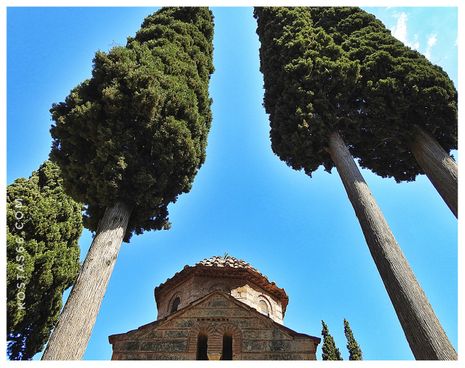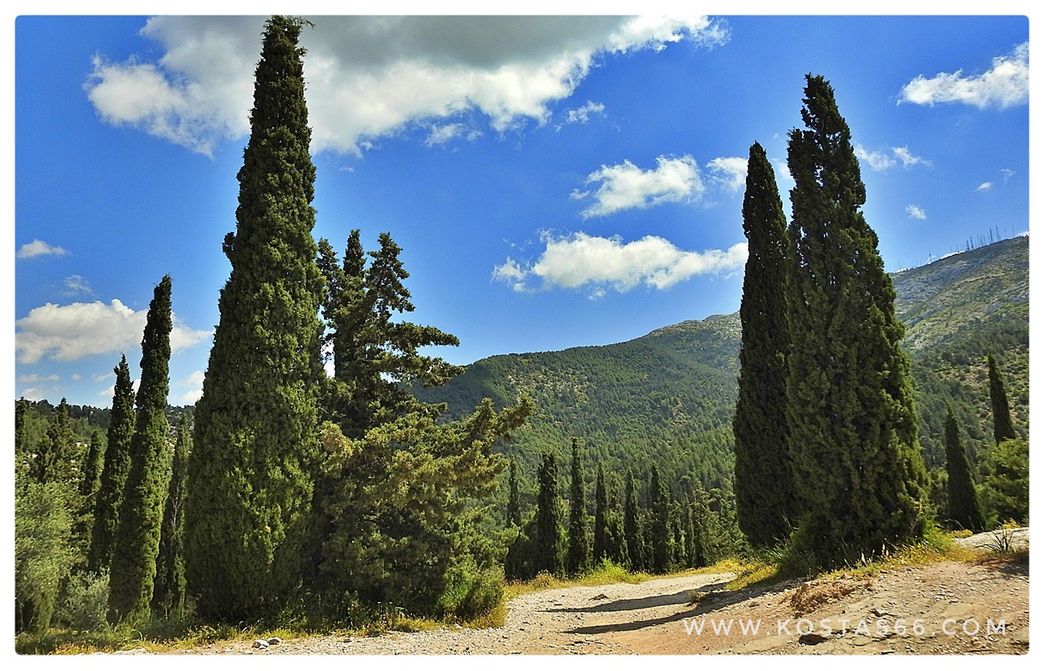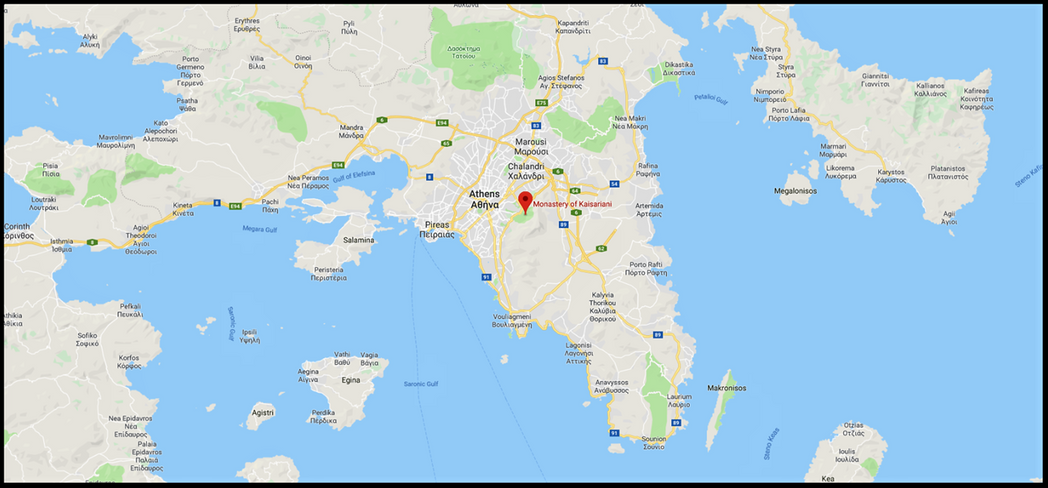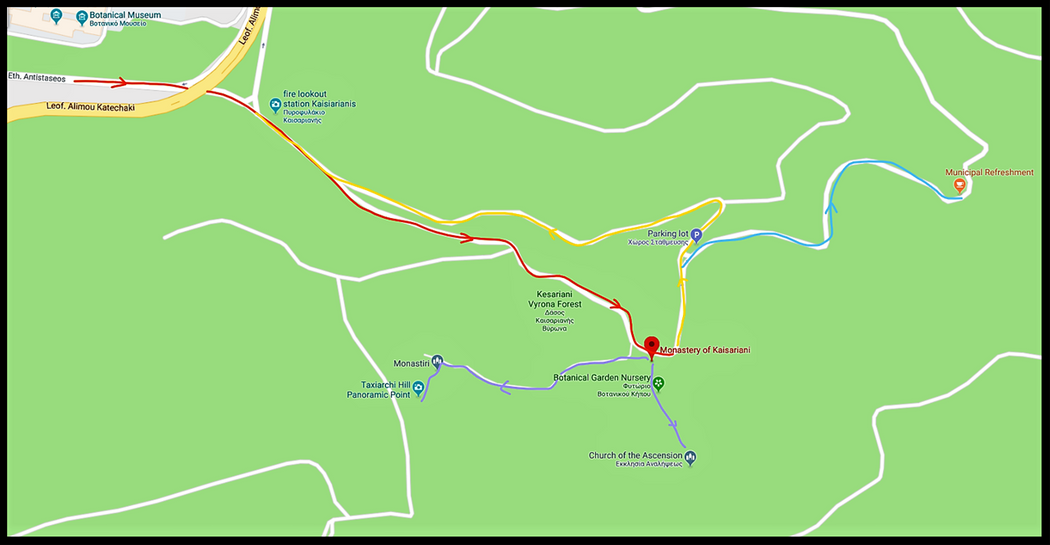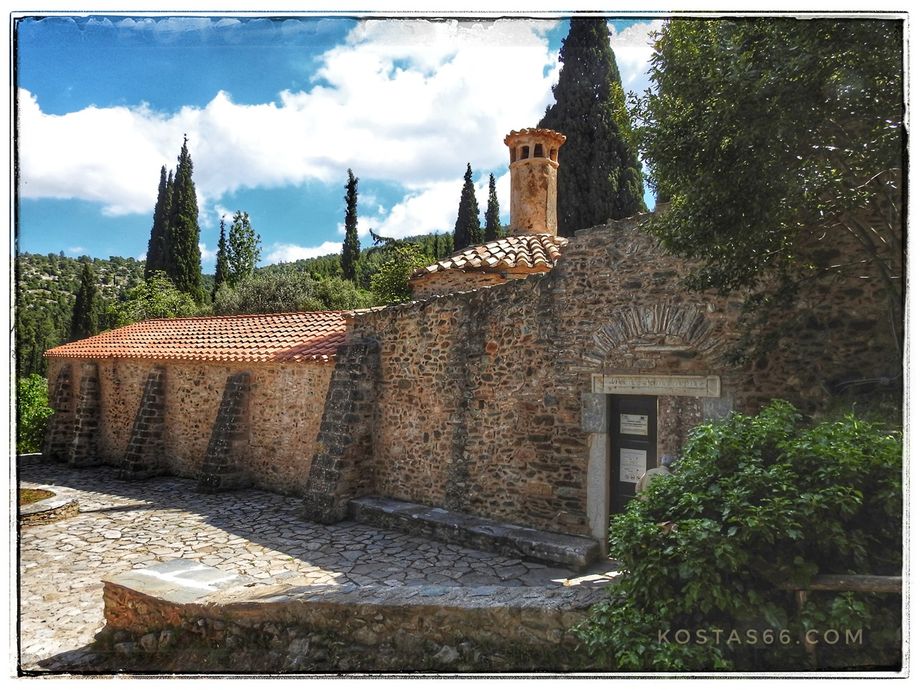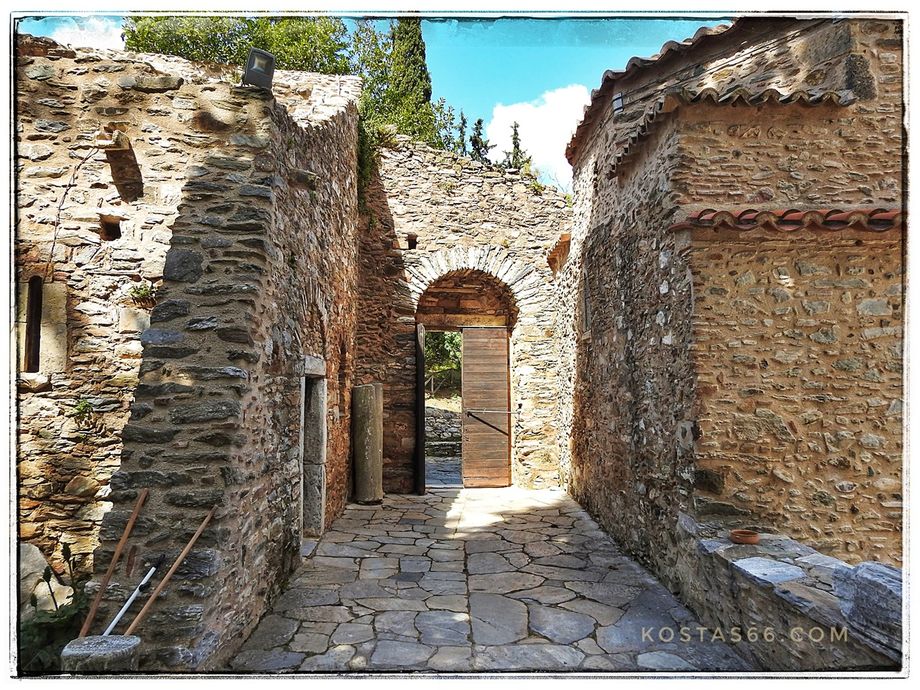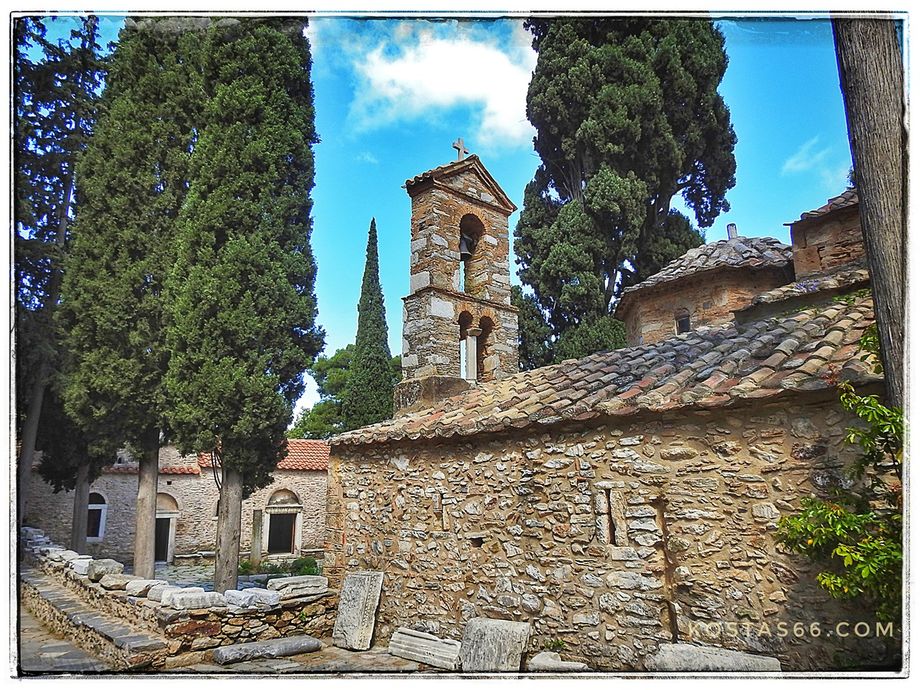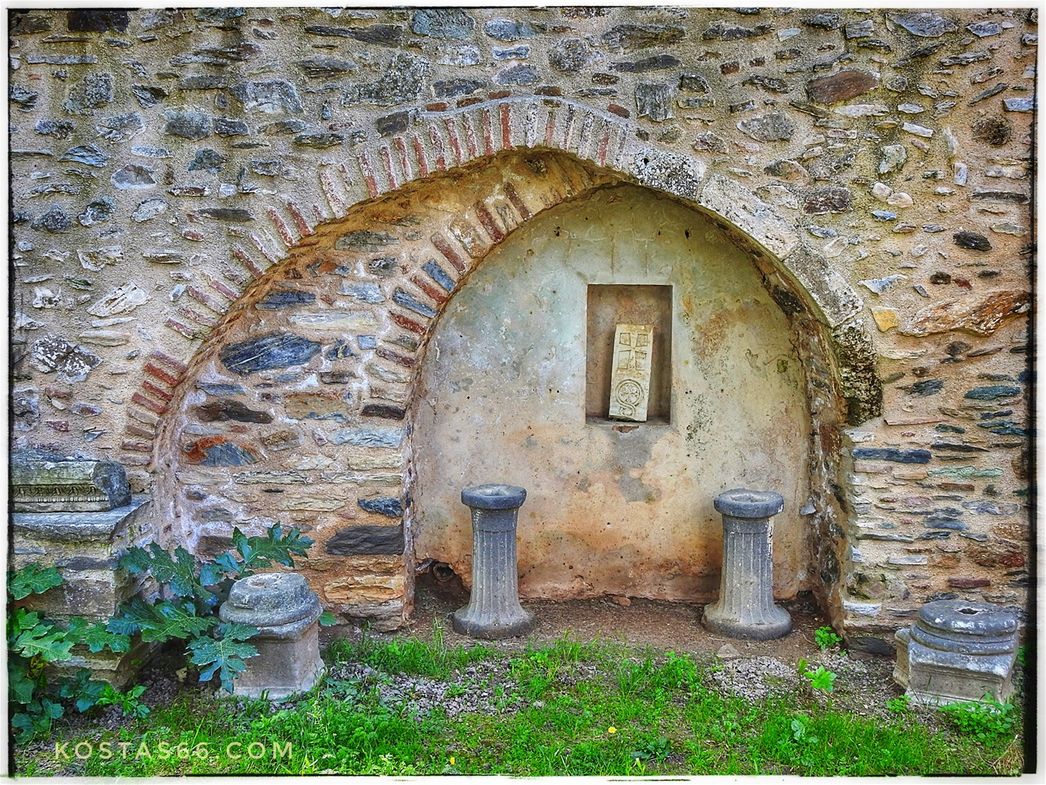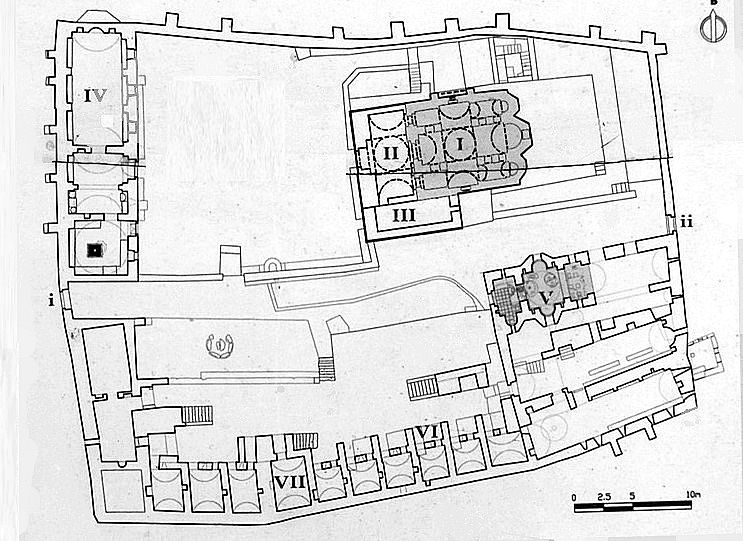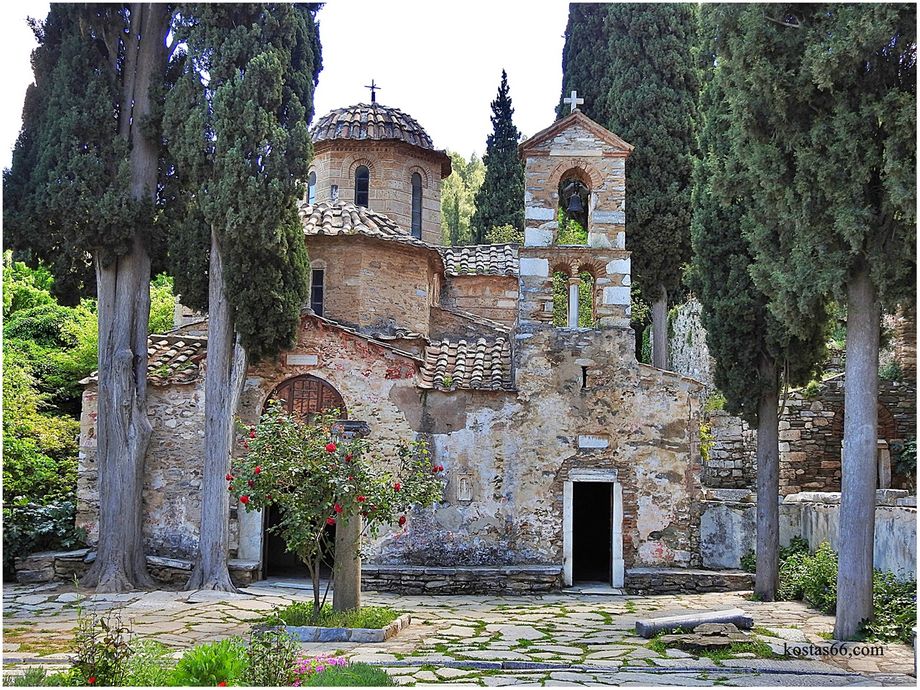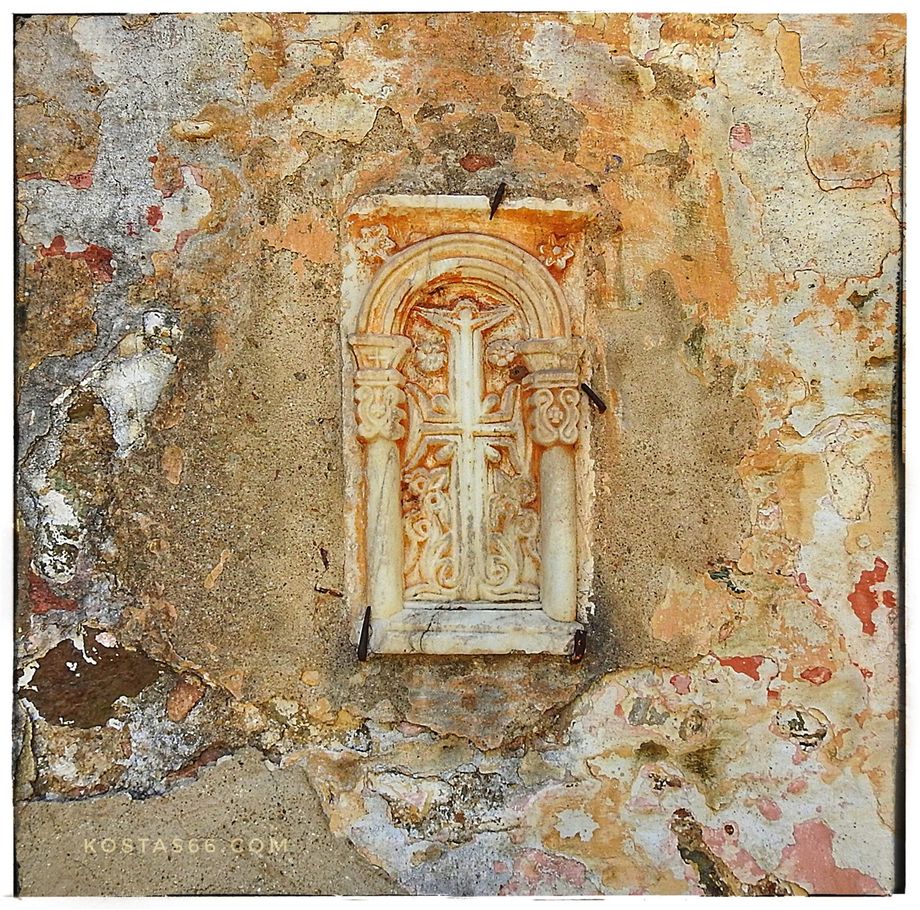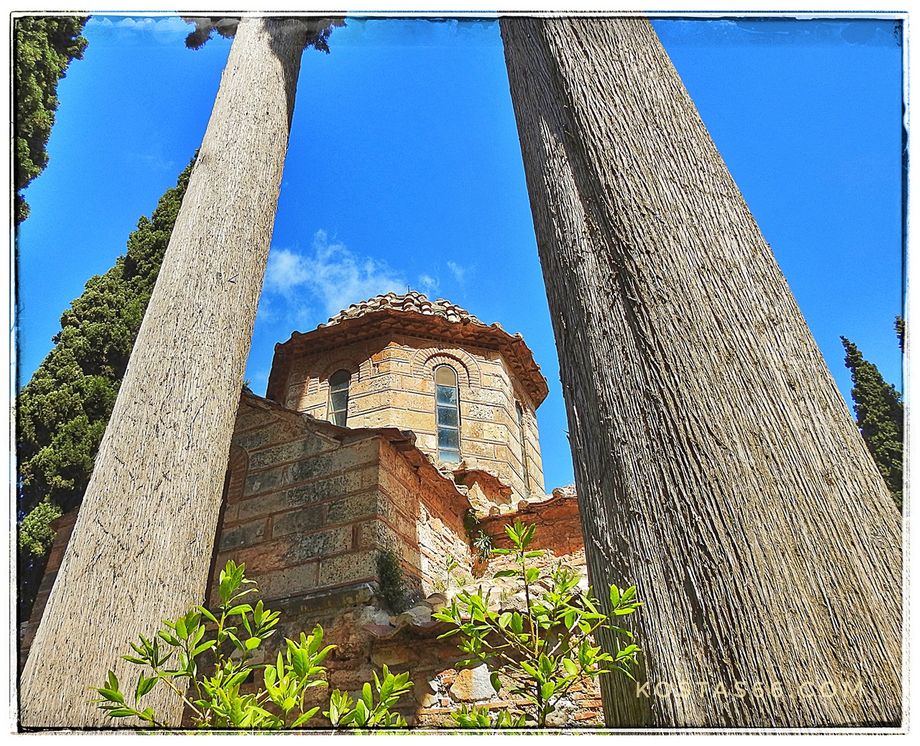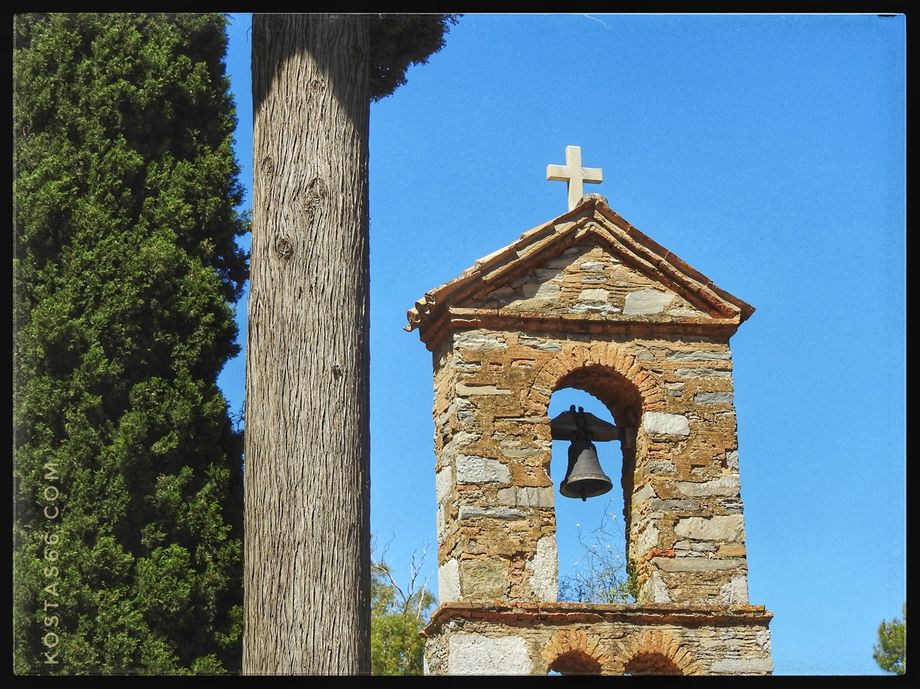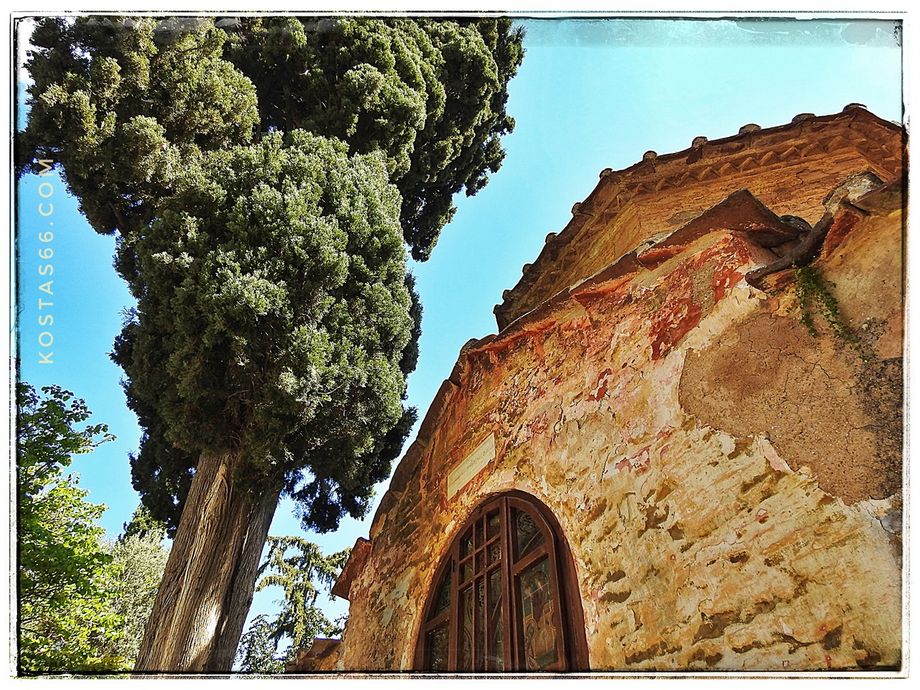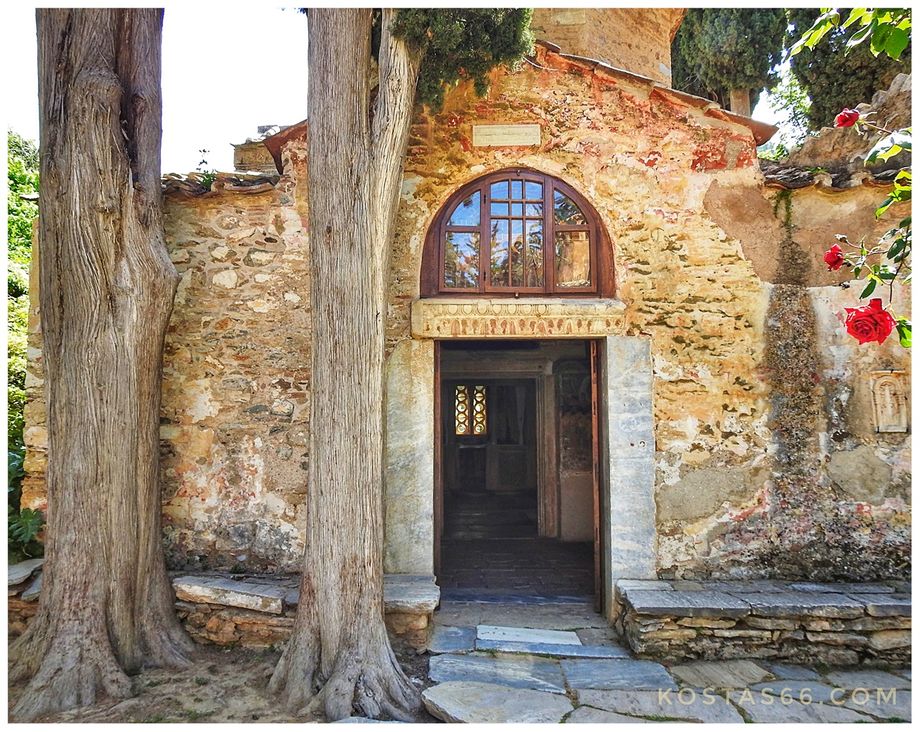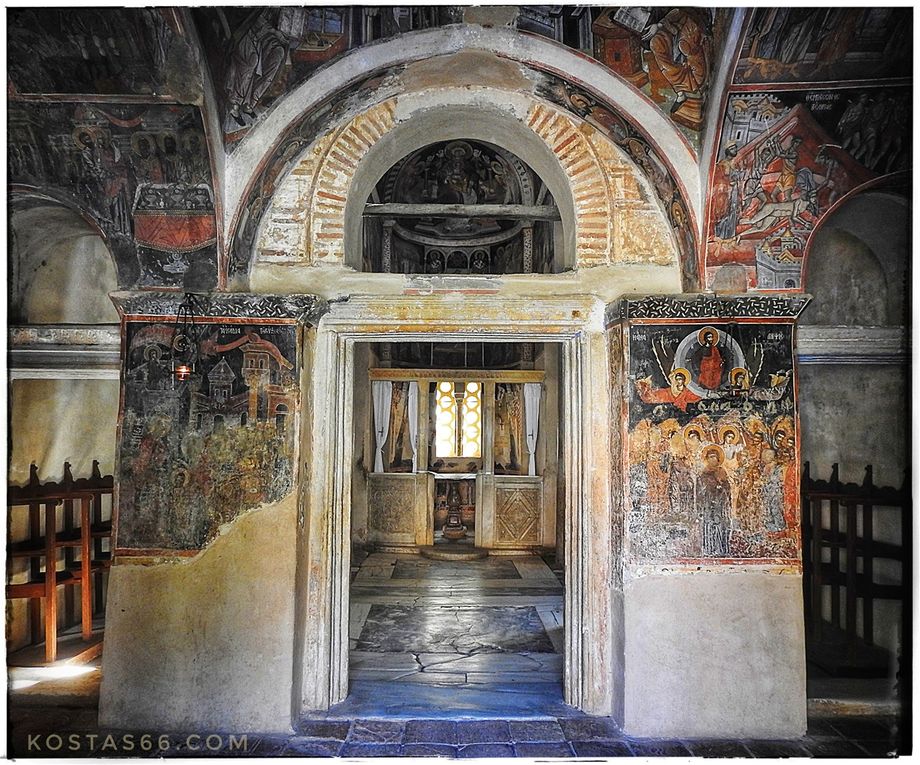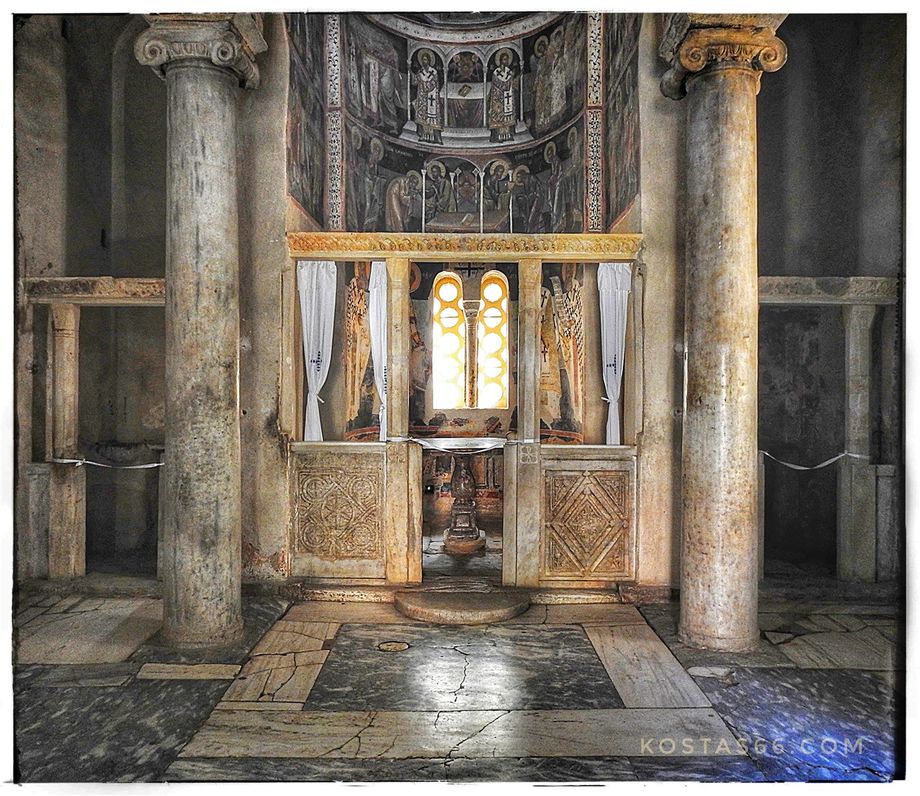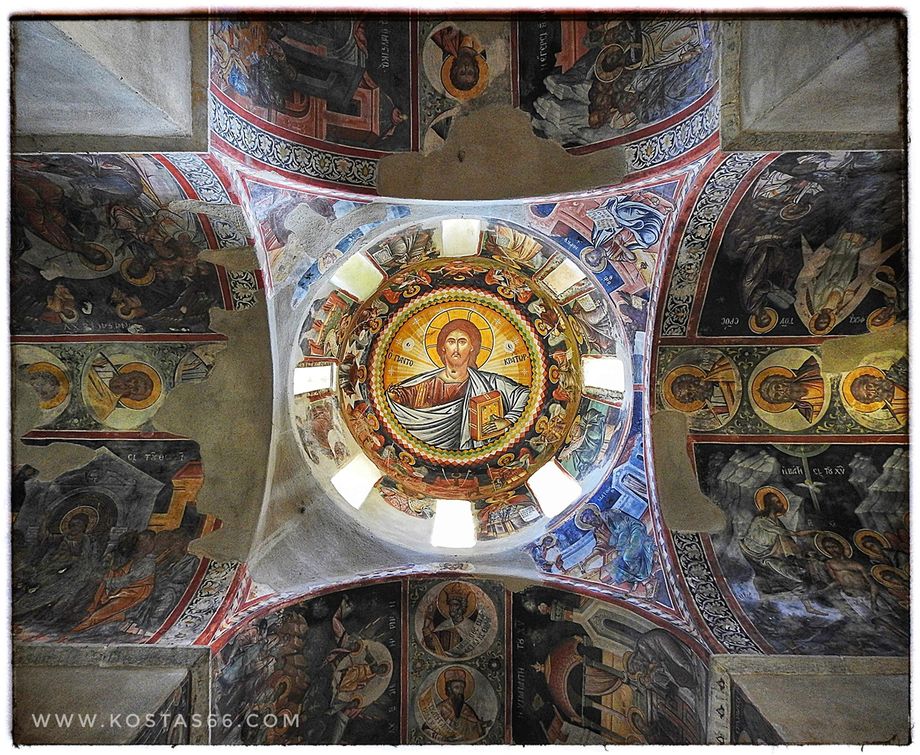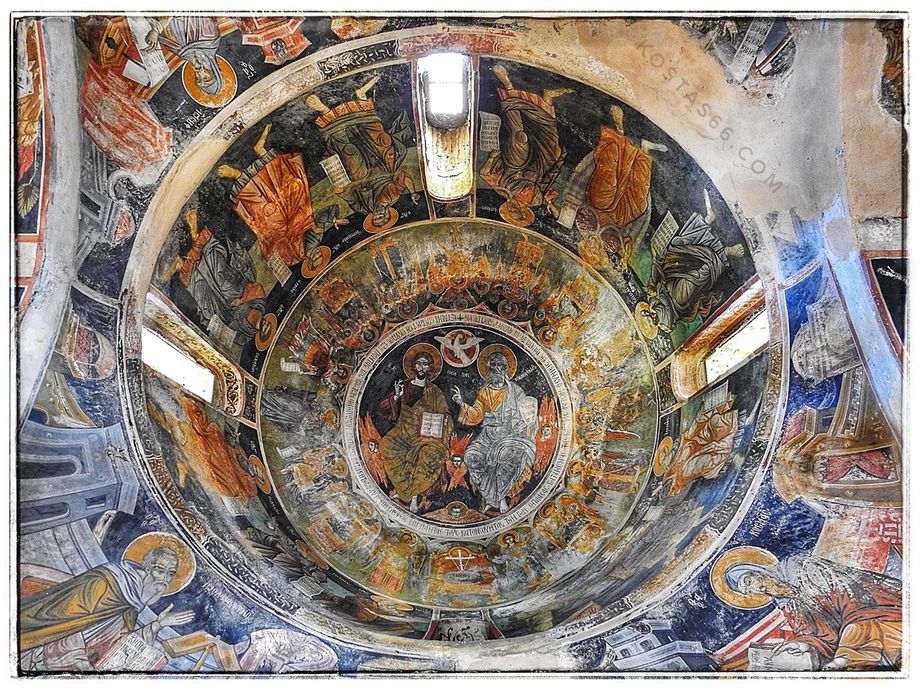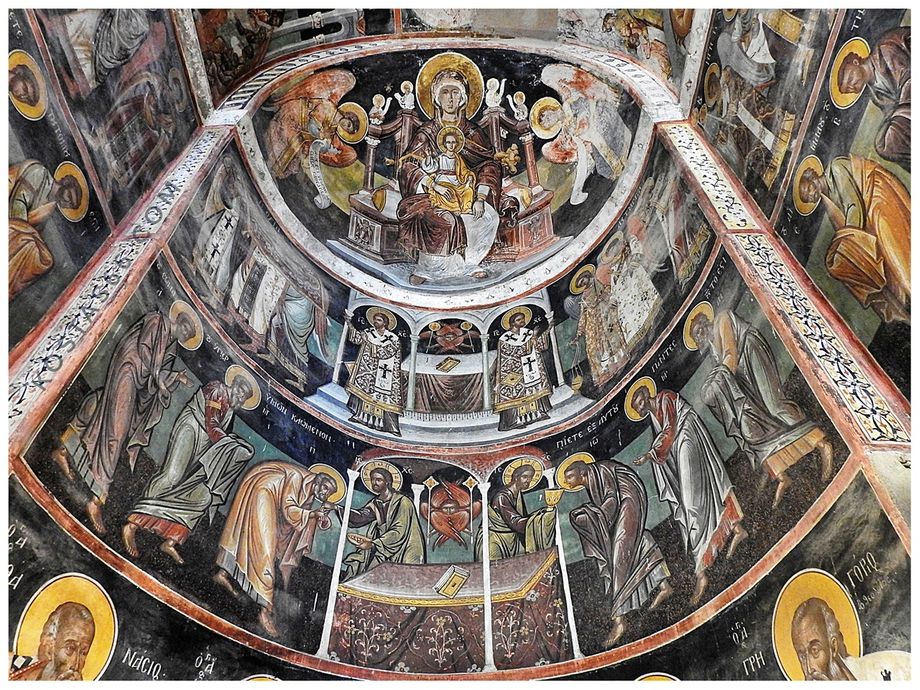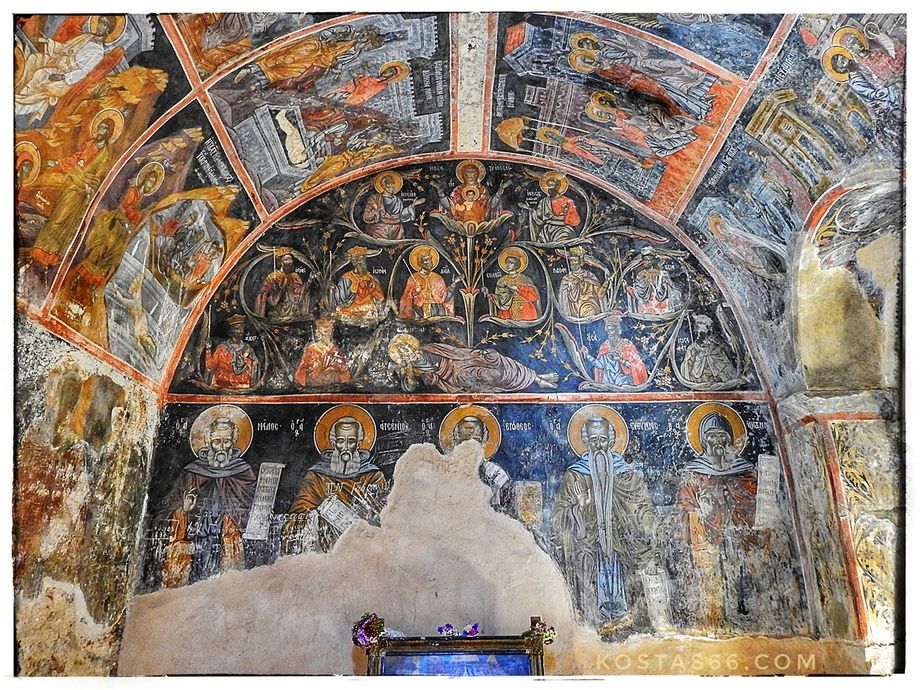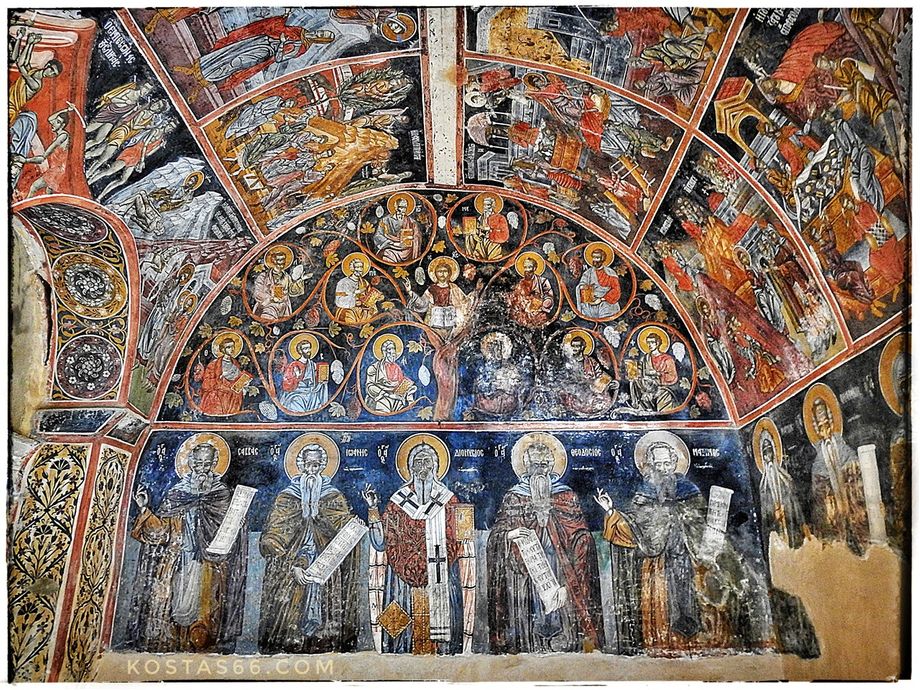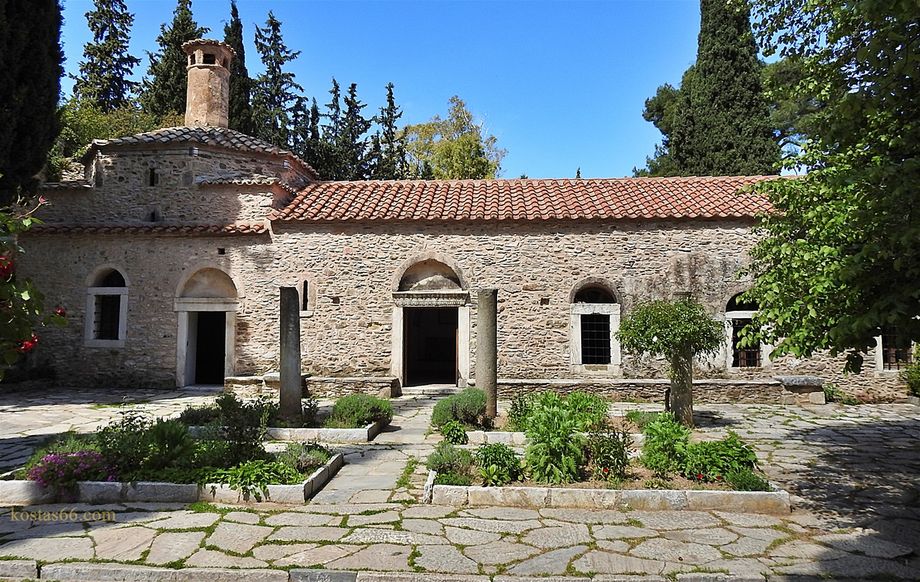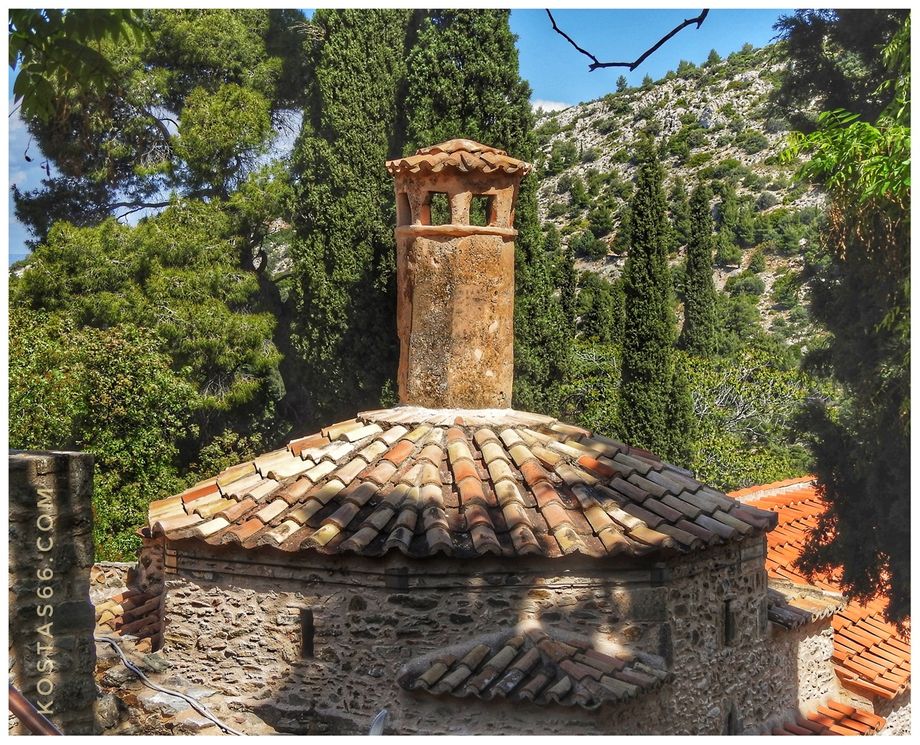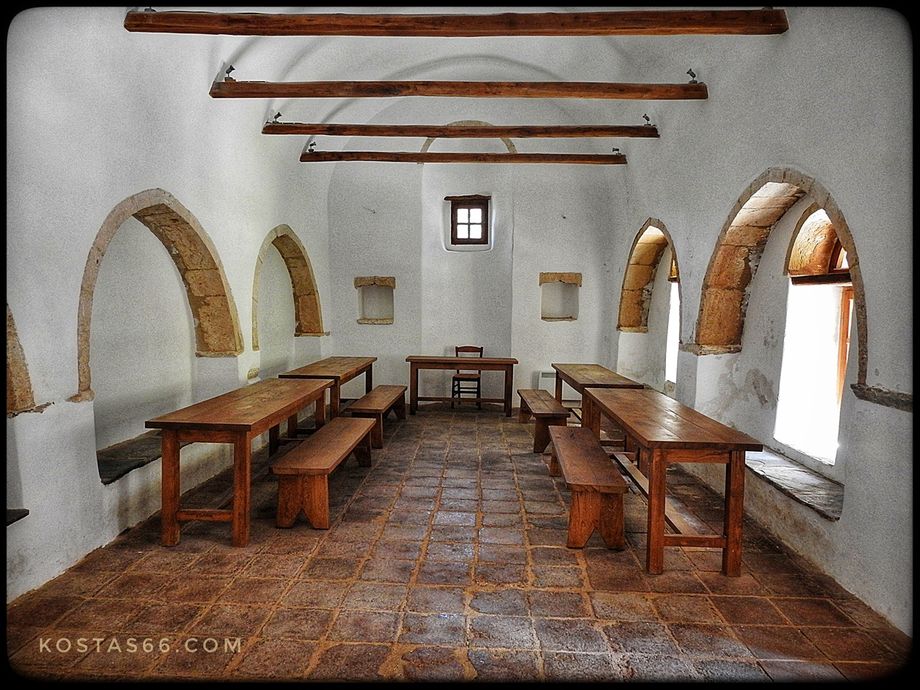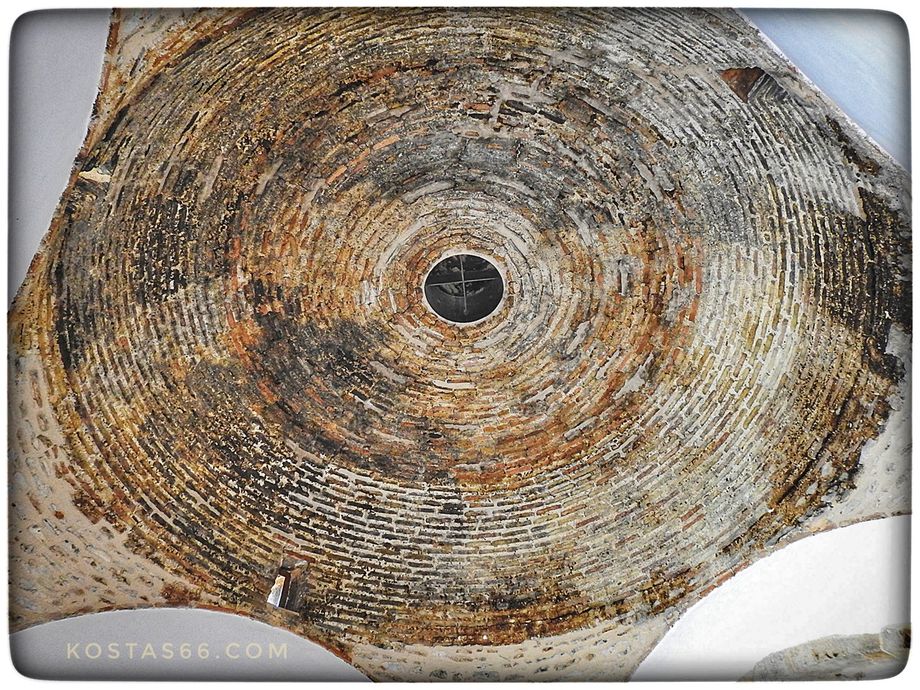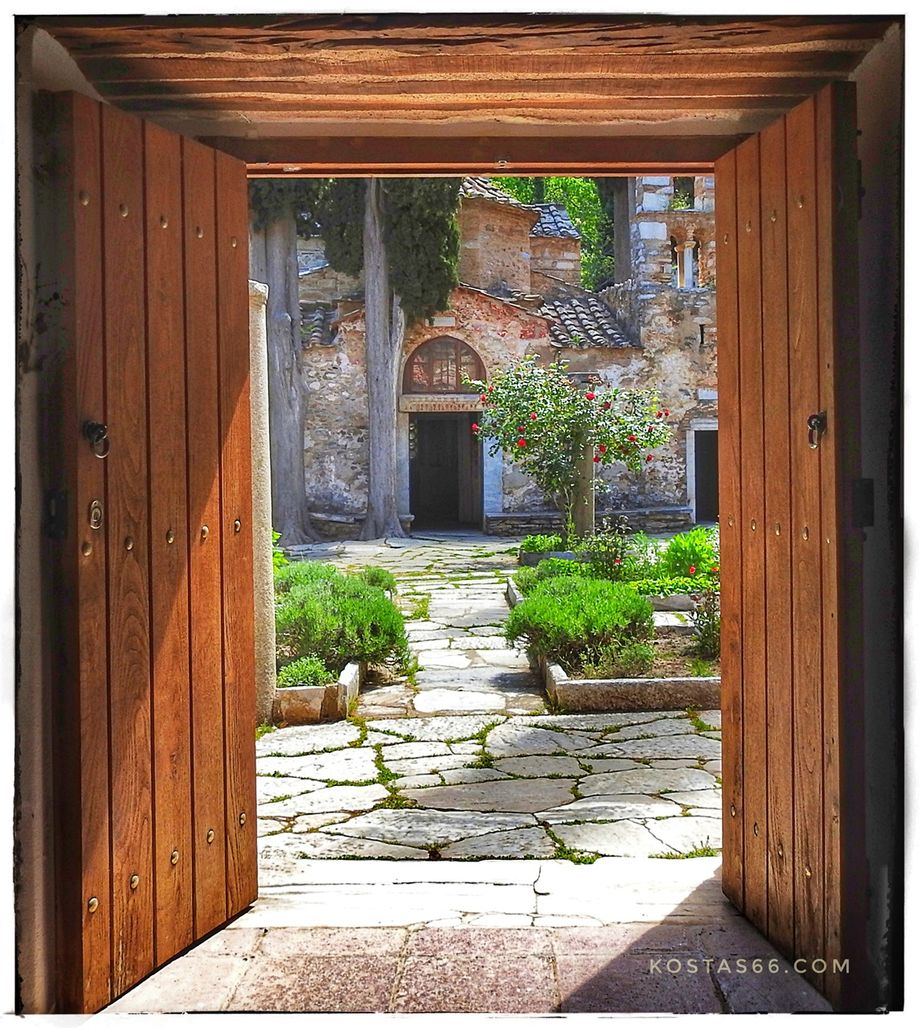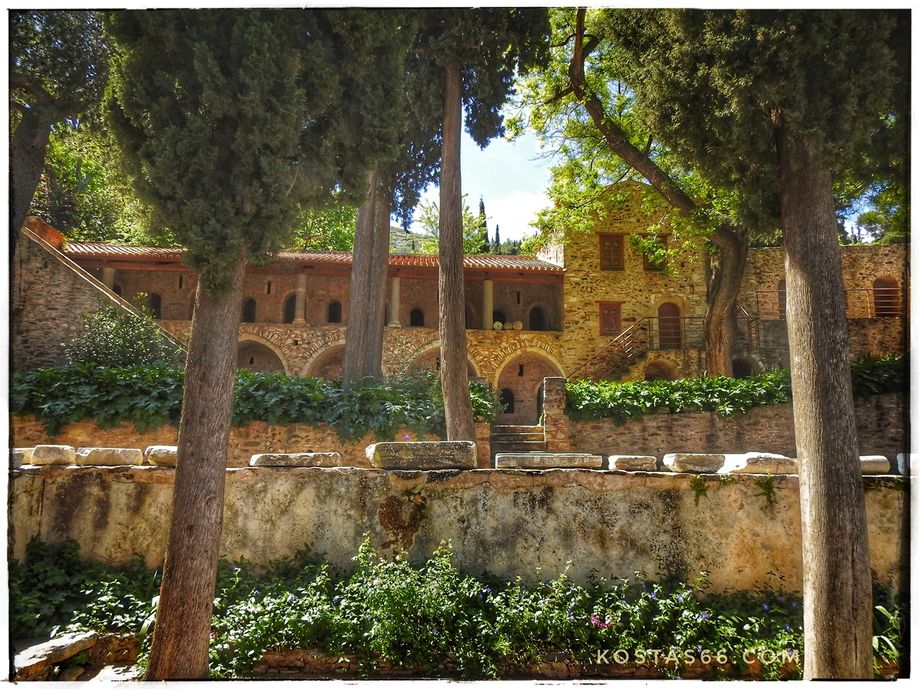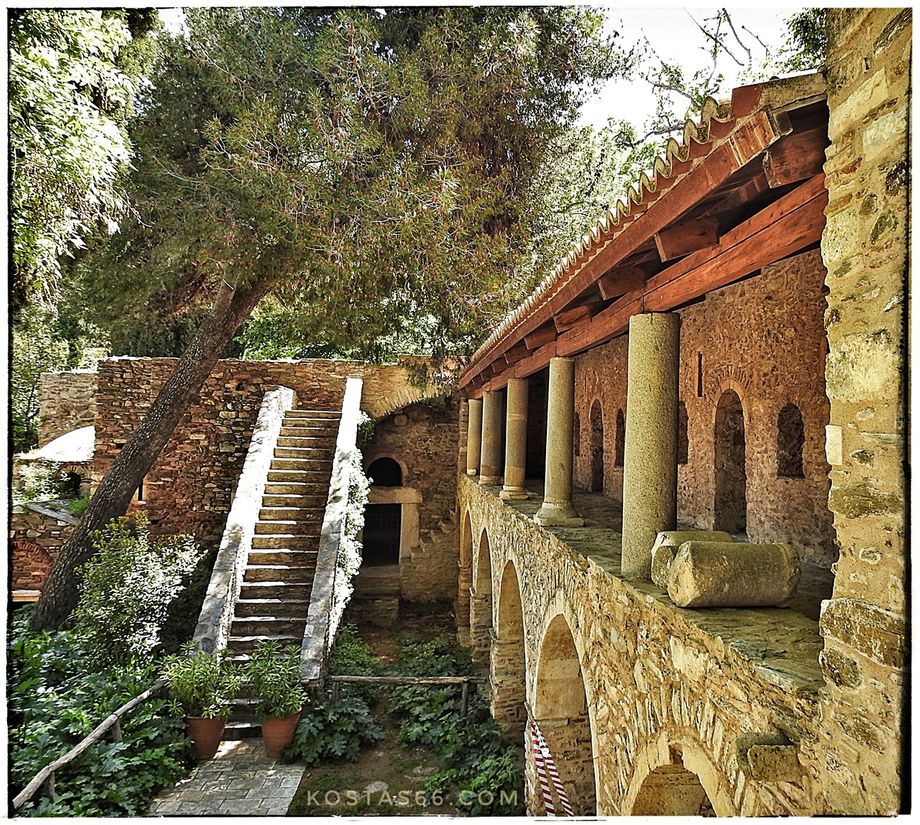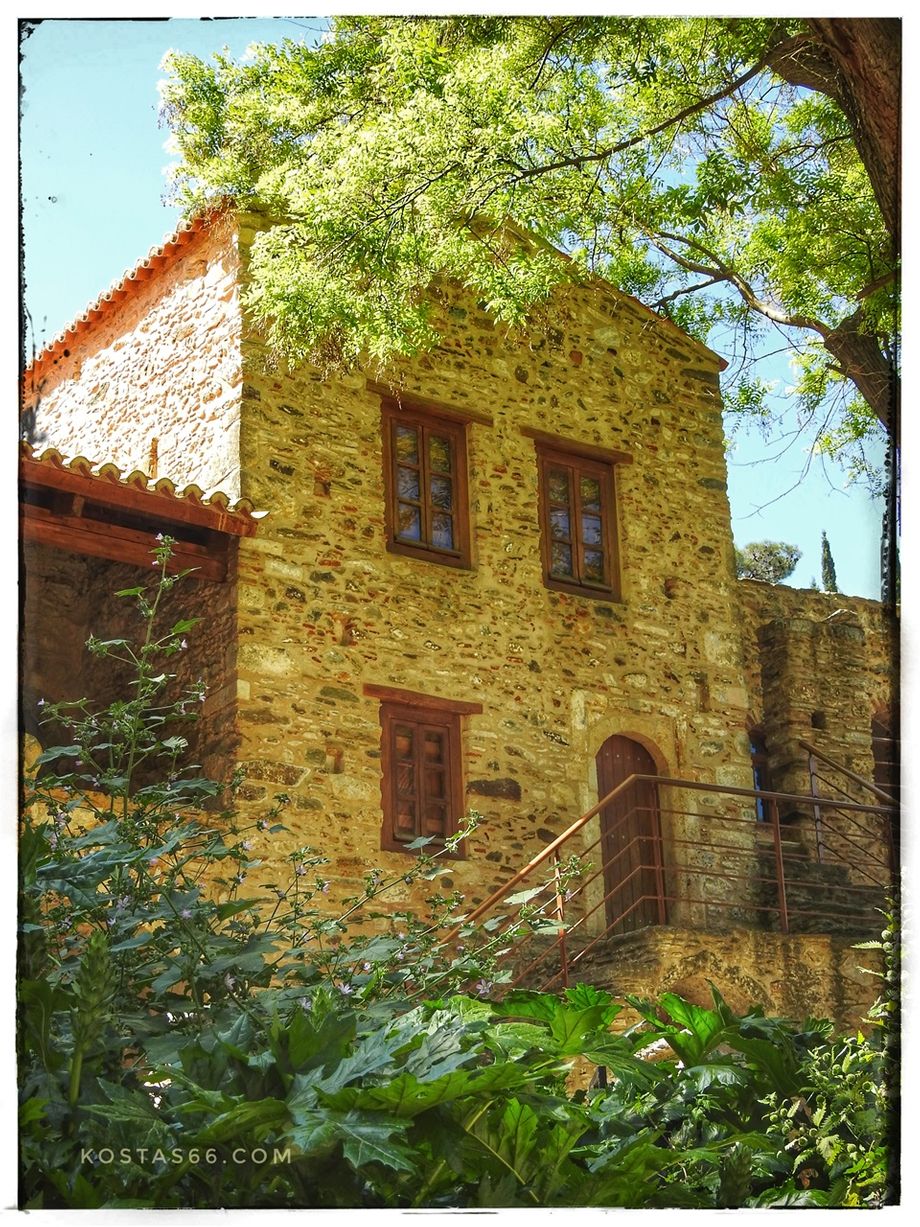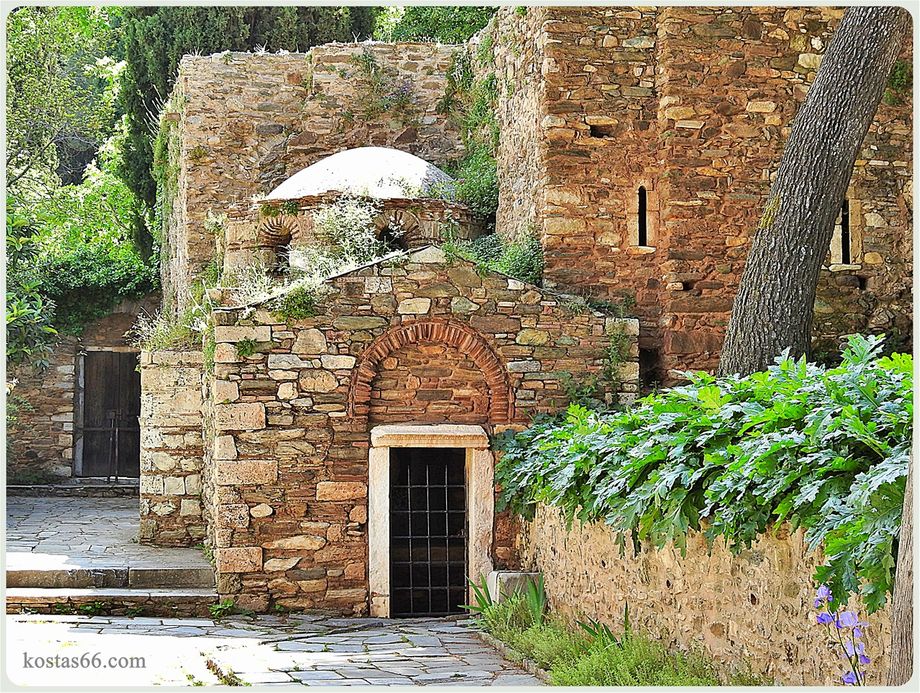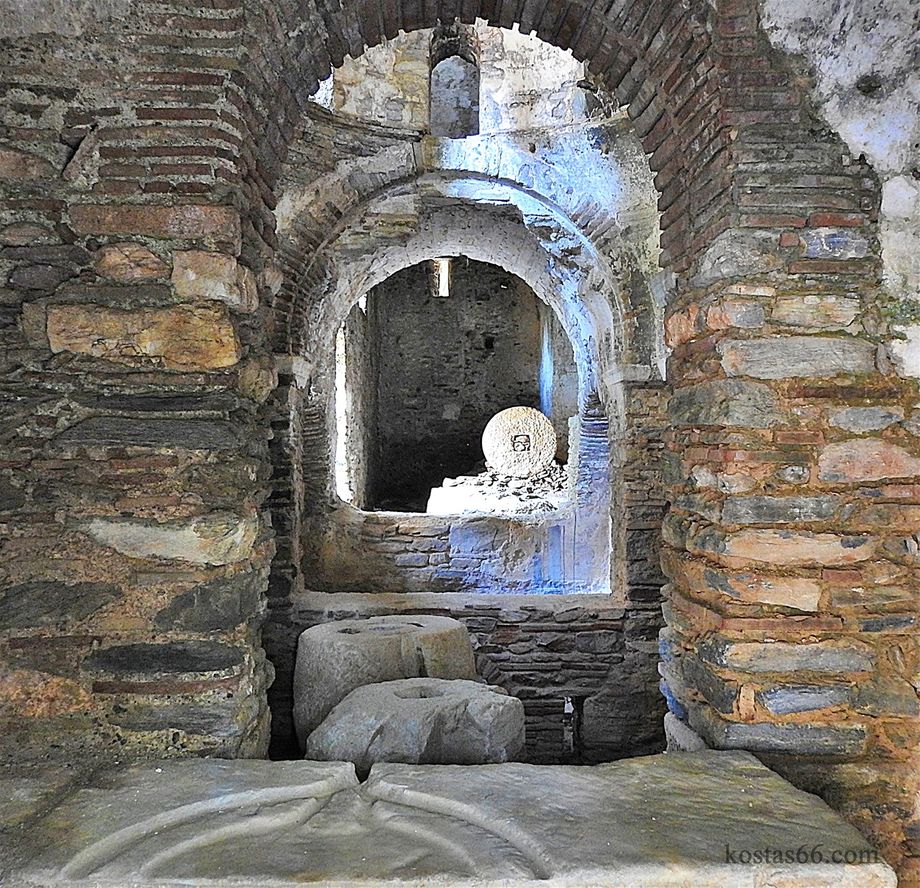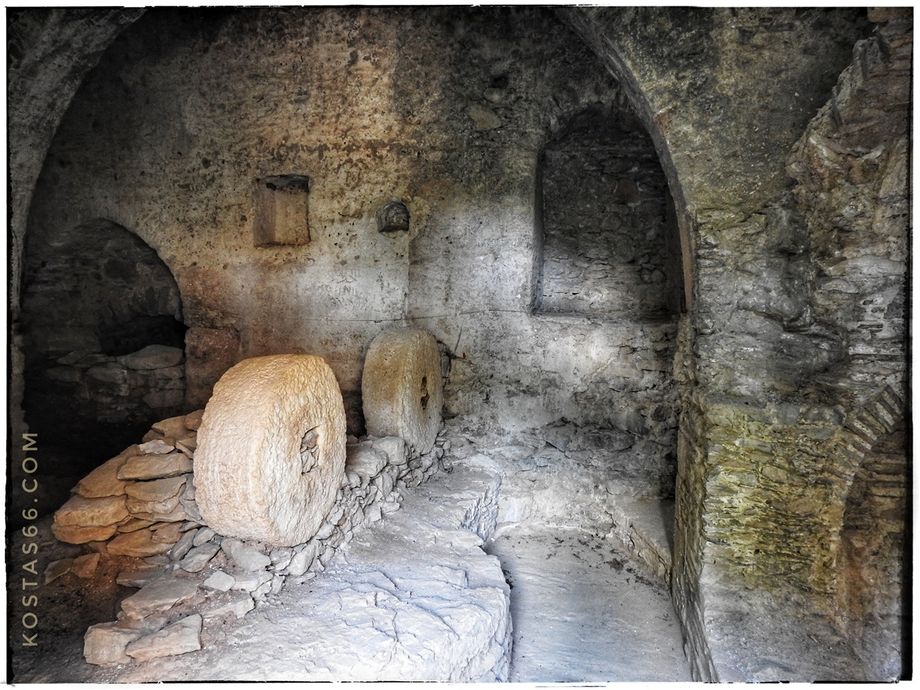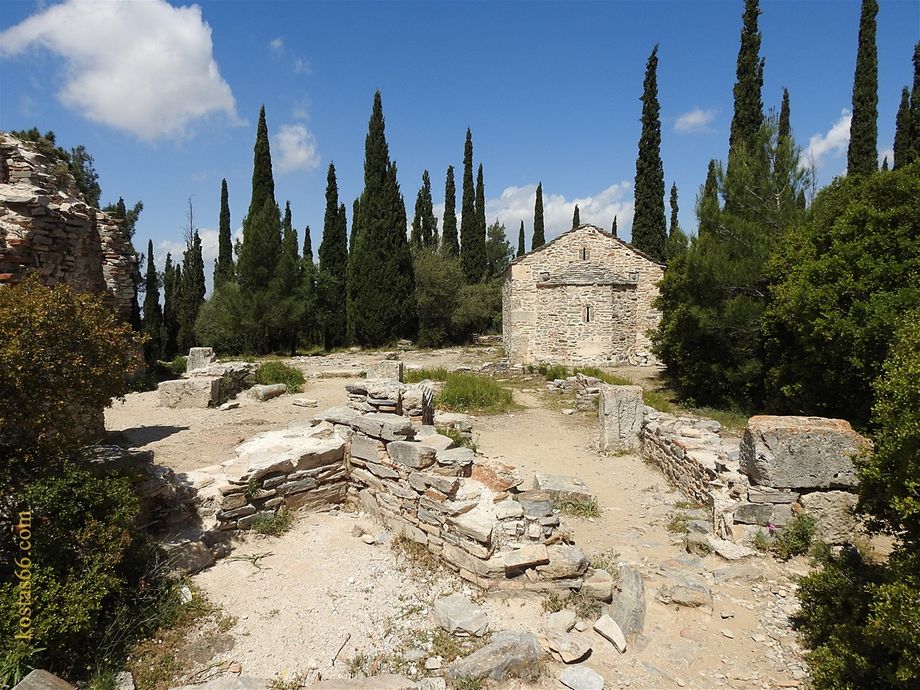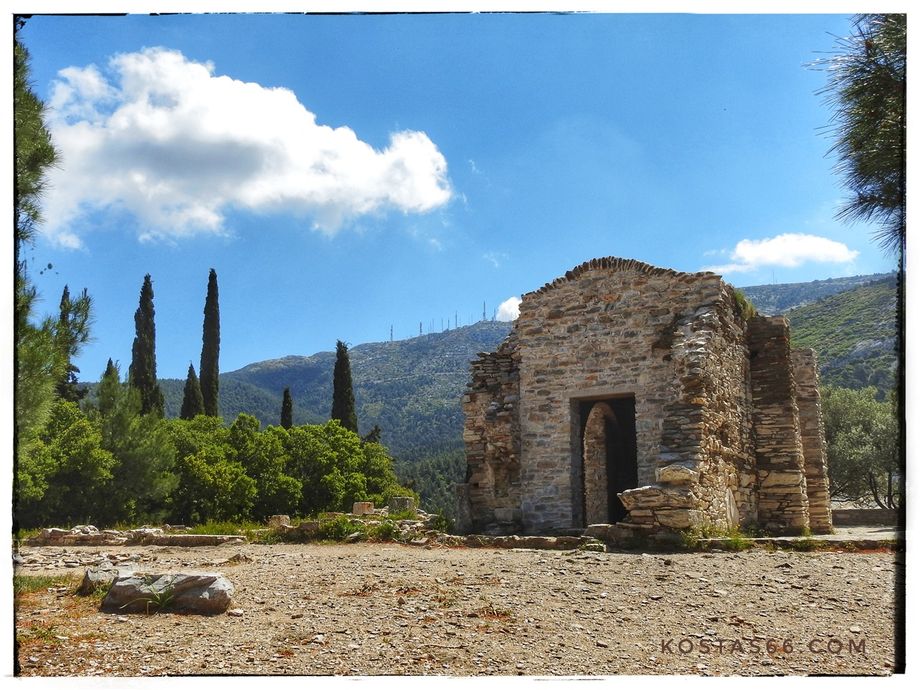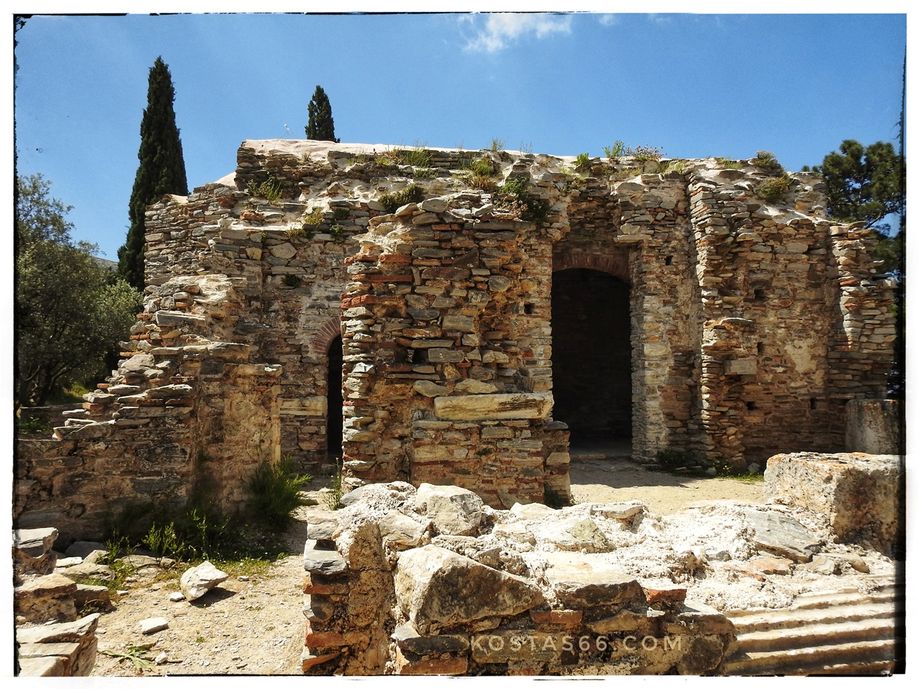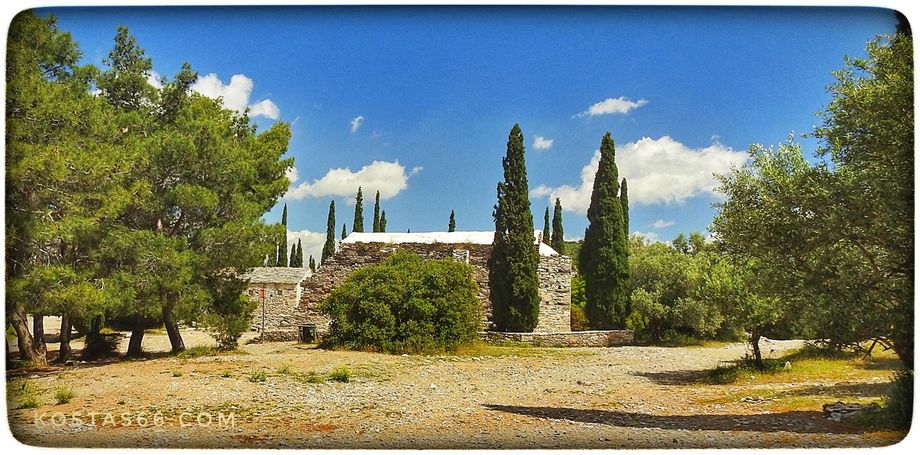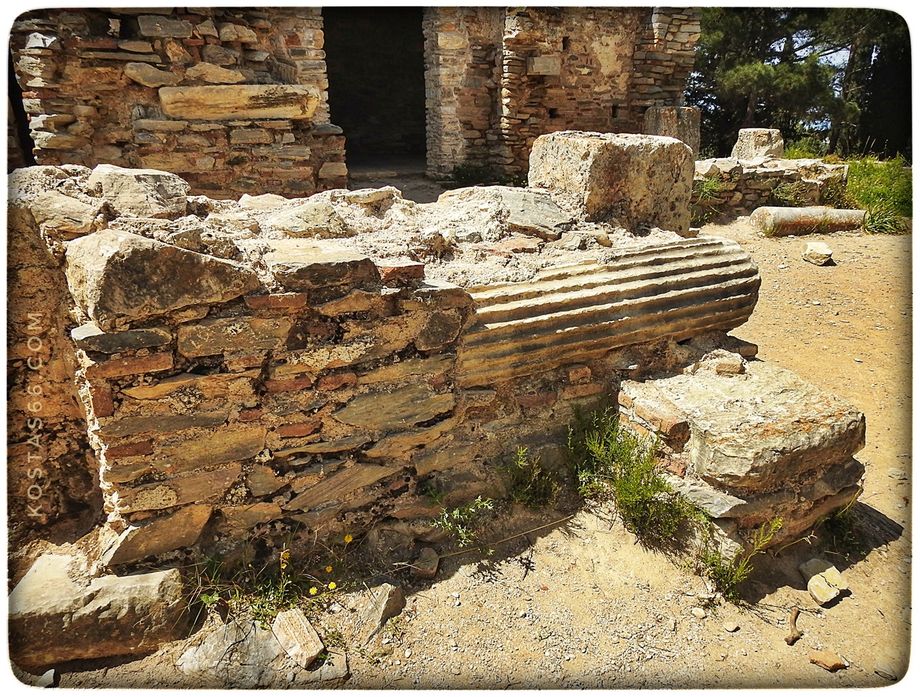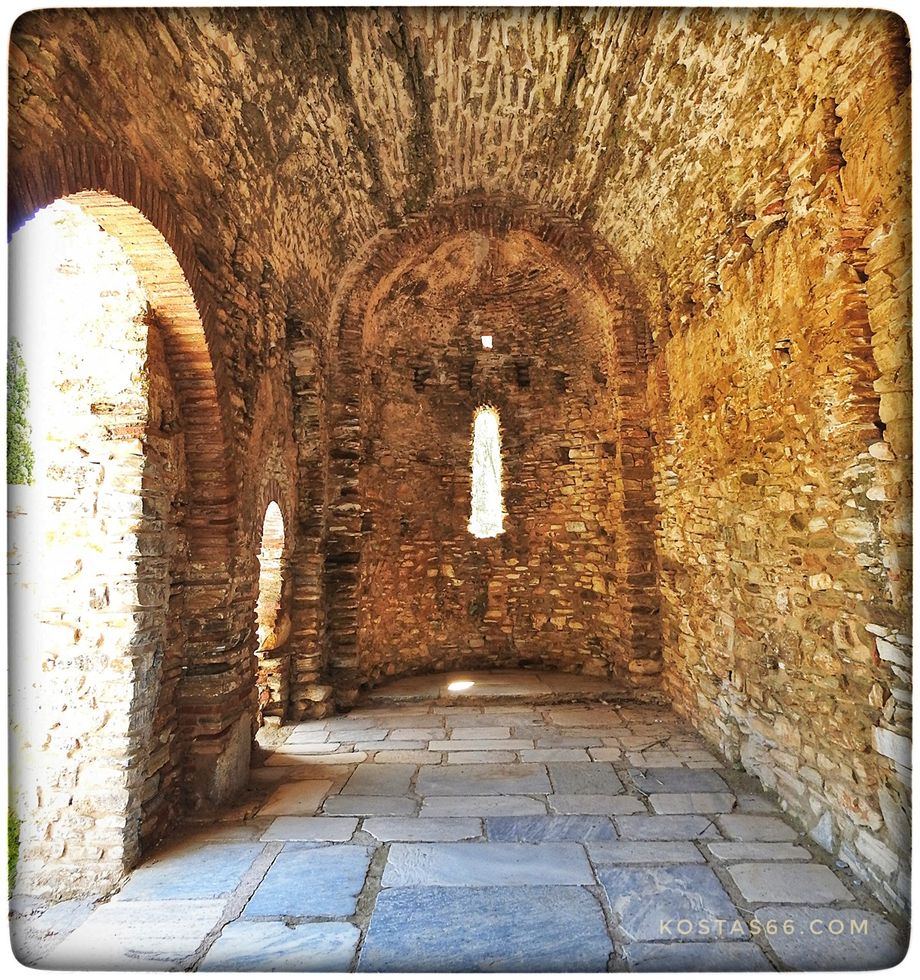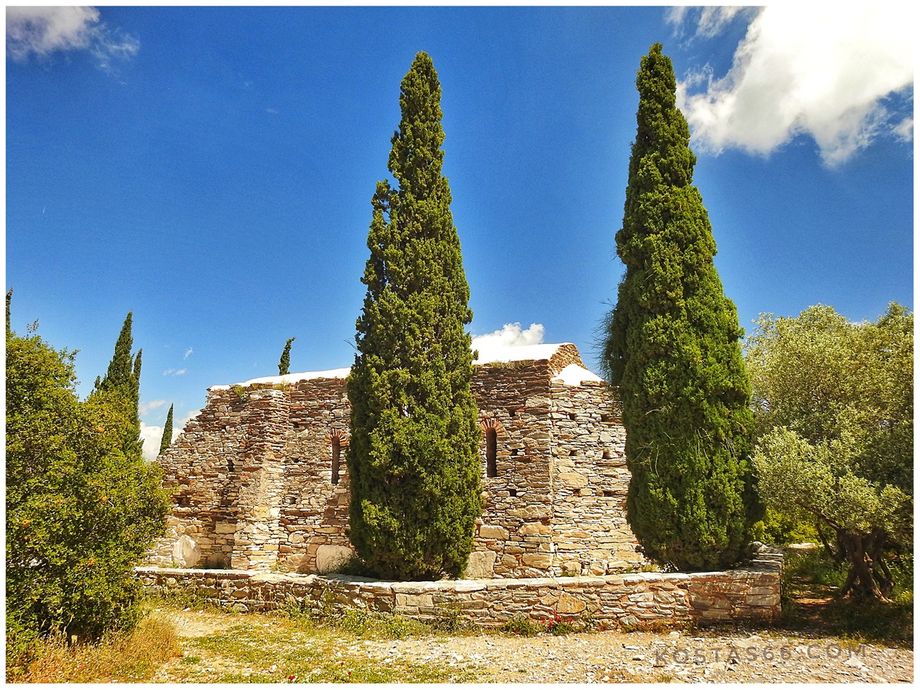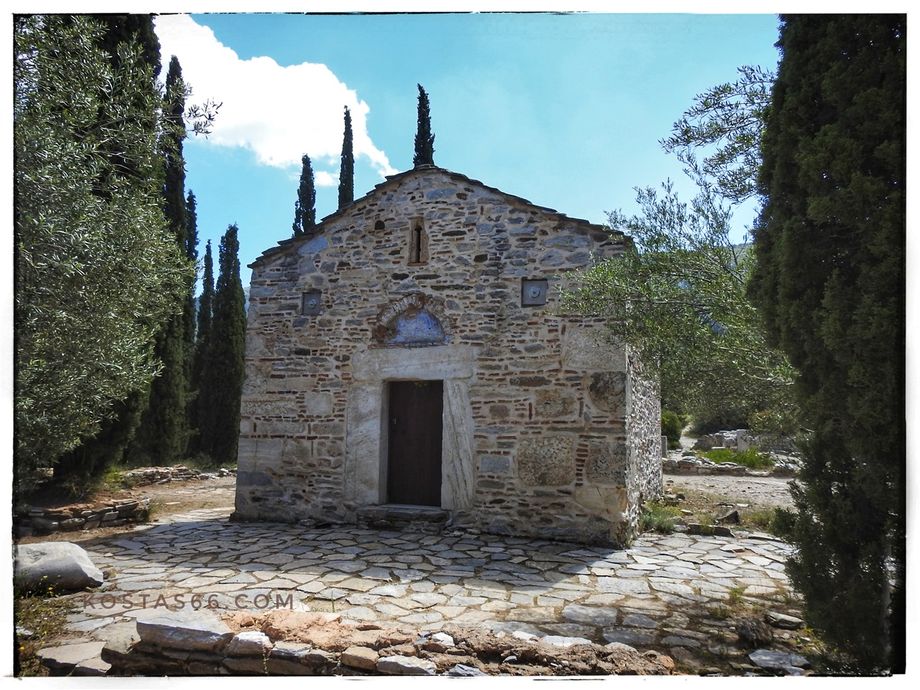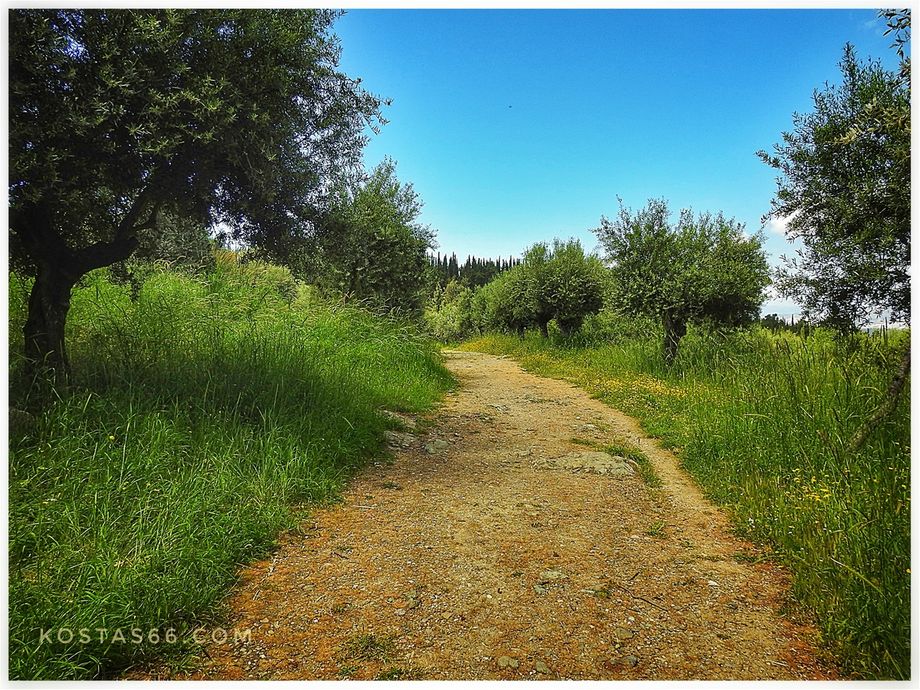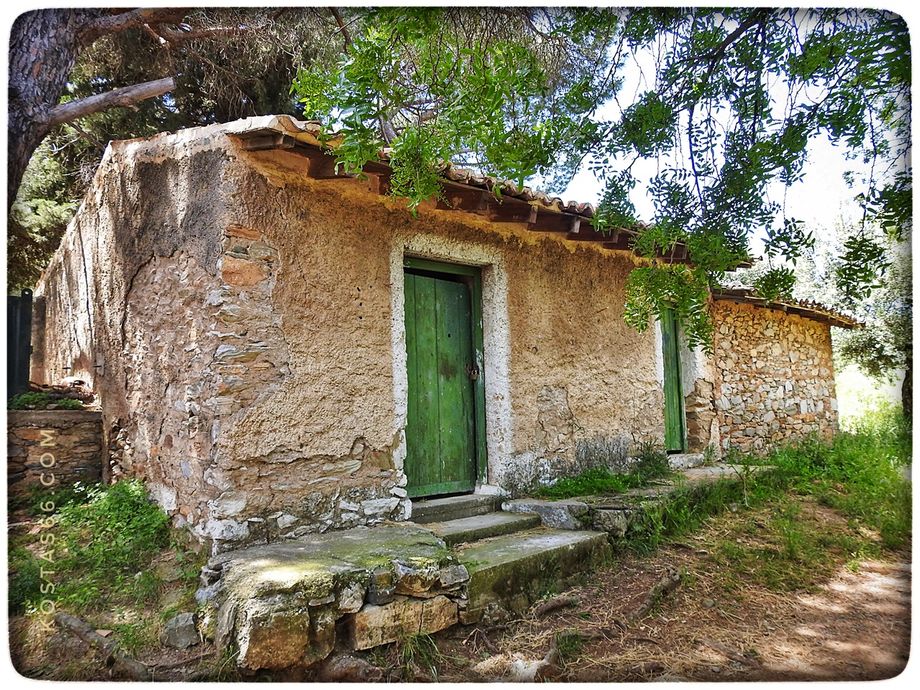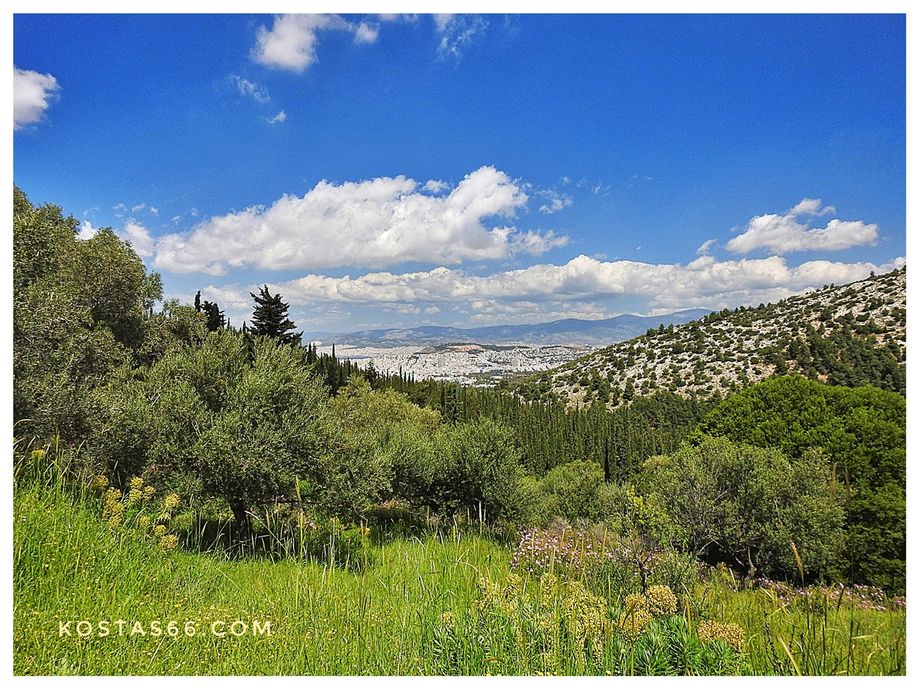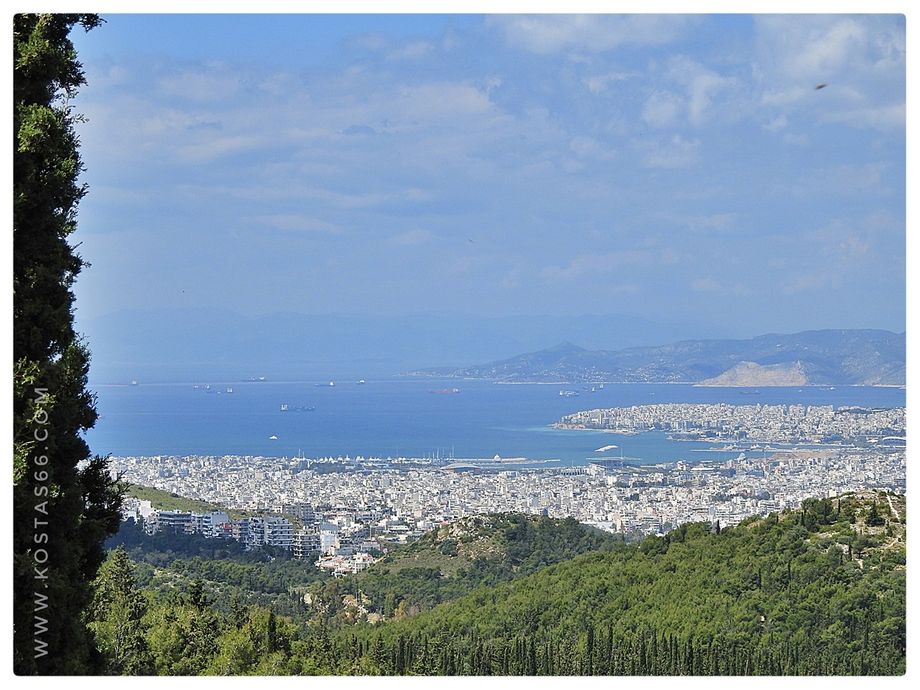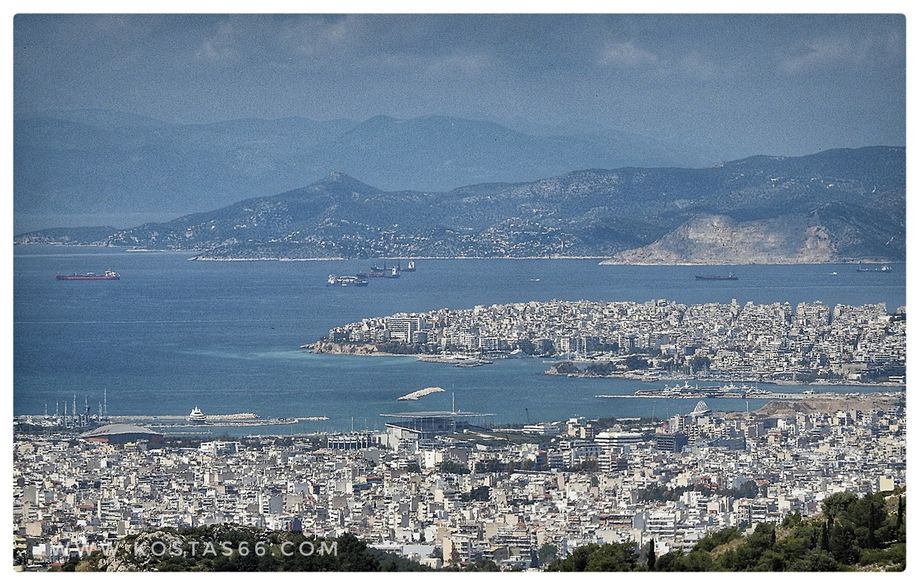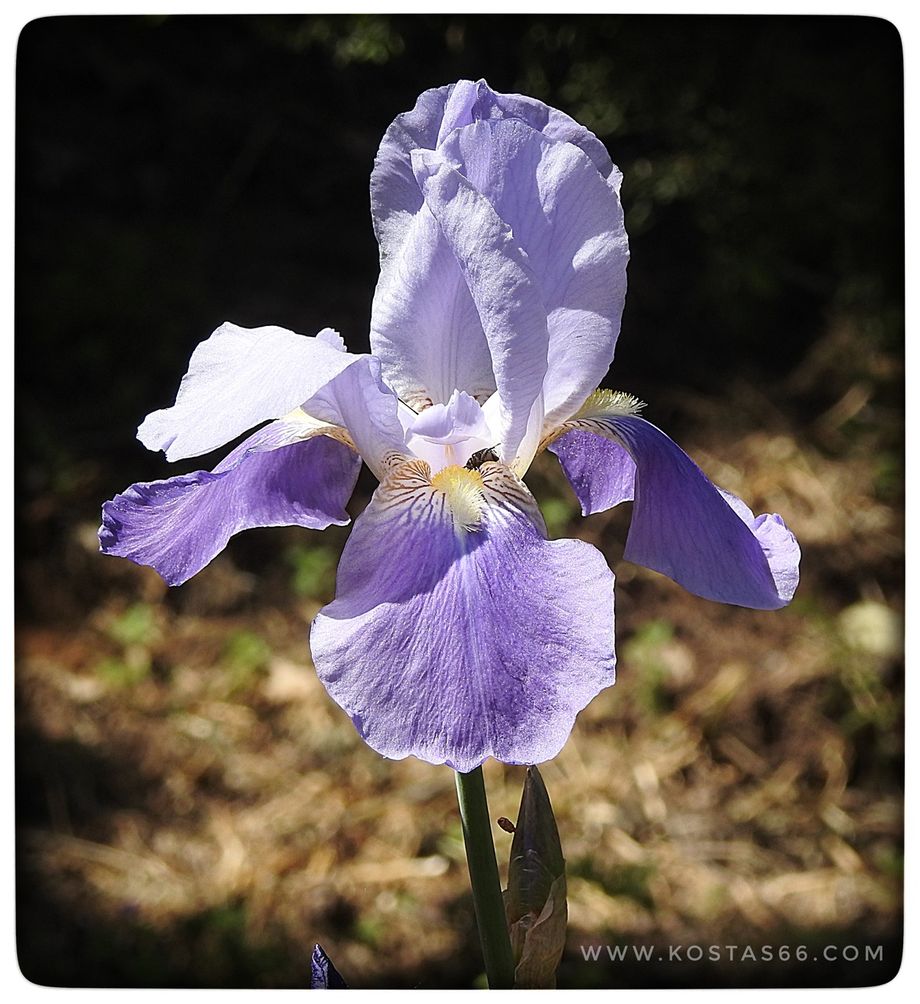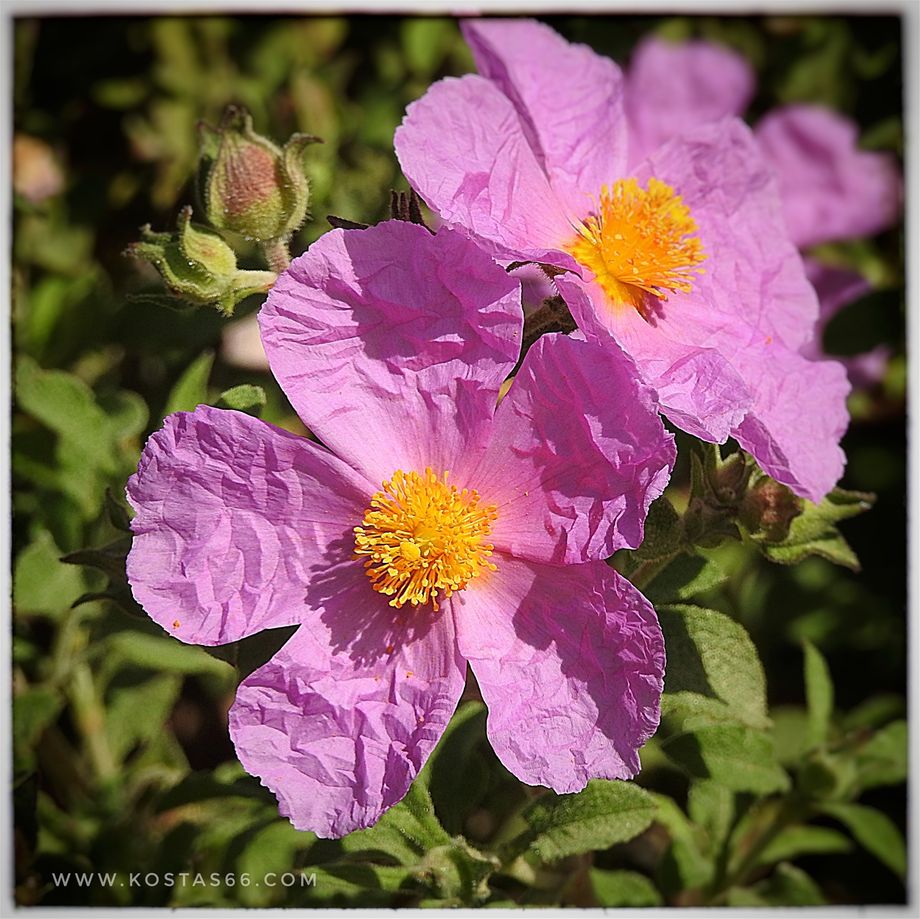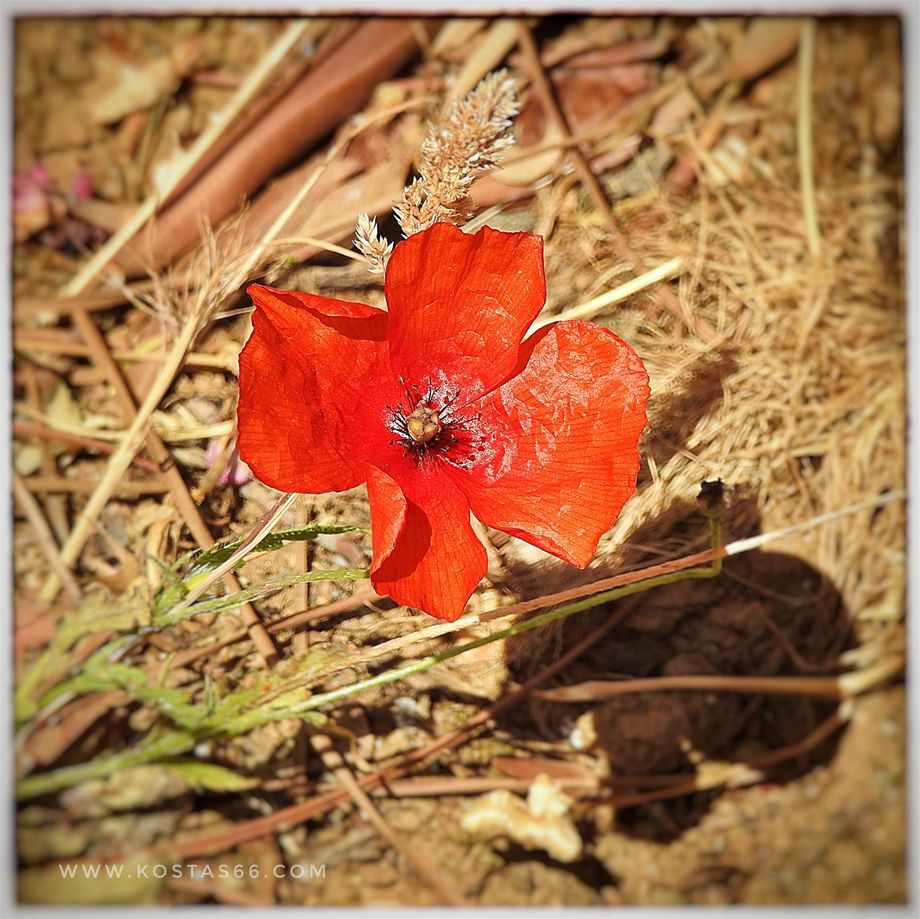Kaisariani Monastery (Athens, GR)
May 2019
The Kaisariani Monastery (Μονή Καισαριανής) is an Orthodox monastery built on a hillside at the north foot of Mt. Hymettus, 8 km east from the center of Athens. The monastery is built in a beautiful forest with pine and cypress trees, crisscrossed by several hiking trails.
Note: The monastery, today, is a museum and not a functioning monastery with nuns or monks. No religious services (mass) take place in the church, except in a couple of occasions yearly.
The monastery is built in a beautiful forest with pine and cypress trees, crisscrossed by several hiking trails.
The monastery location (east of Athens) on the map.
The Monastery is built in a pine forest. The red line shows the road (one way road) to the monastery, while the yelow line the road from the monastery (one way). The purple line shows the foot paths to Taxiarchon Hill (west) and to the ruins of the Church of the Ascension (south). The light blue line shows the road to the cafe..
In this location, in antiquity, there were ancient Greek shrines and other instalations, before being taken over by Christians as early as in the 5th/6th century. The first Christian church (early basilica), which was erected in the area, was located on a nearby hill southwest of the monastery (370 meters southwest of the Monastery) with panoramic views of the Saronic Gulf and of Athens today. The ruins of this early basilica, are visible even today in the place Fragkomonastiron, better known as Taxiarchon Hill (Archangels Hill). The easy detection of the position of the Monastery from pirates and other invaders, probably gave rise to the movement to the current position of the monastery. Over the remains of the basilica a smaller church was built in the 10th/11th centuries, which in the 17th century reconstracted by the venetians to a catholic chapel (Saint Mark). The remains of this chapel is what we see today. Some meters away from the basilica ruins, stand a small 17th/18th century chapel, (Taxiarchon chapel), which was the cemetery church once located here.
The Monastery
The monastery is enclosed by a high wall with two gates, one on the east and one on the west side. The latter is the gate used by the guests today.
Just after the gate there is a ticket office. Entrance fee: 2€.
The Monastery is open daily, except Tuesday and holidays, from 8:30 till 16:00.
The western wall of the Monastery, and the main entrance to it on the right.
The entrance to the monastery seen from inside. The little door on the left is the ticket room.
The southern side of the catholikon.
We do not know exactly when the monastery was built, but the catholicon (main church) was built in the late 11th -early 12th century and was dedicated to the Presentation of the Virgin to the Temple. It was built on the ruins of an ancient Greek temple dedicated most probably to Goddess Demetra. This is a very common practice, to build on earlier buildings, because in this case one has readily available building material. Much of the marble pieces of the Greek temple, have been incorporated in the church and in other buildings, and many of them can be seen scattered all around the place.
During its apogee, the monastery had hosted many significant spiritual figures of the time. It had a famous, rich library which was moved to the Acropolis of Athens and destroyed during the Uprising of 1821. The fertile surrounding lands belonged to the monastery, as did various other holdings. The monks' income was substantiated by the produce from their olive groves, grape vines and beehives. The monks were also renowned for concocting medicine from various herbs.
There are four main buildings inside the fortification walls of the monastery: the catholicon, the refectory with the kitchen, the monks’ cells with the Benizelon tower; and the baths.
Monastery plan: I: nave, II: narthex, III: saint Antonios chapel, IV: refectory, V: cells, VI: Benizelon tower, i/ii : gates.
The catholicon, is a cross-in-square, four-column church, with a dome, and its walls are built in the cloisonné masonry with brick ornaments. The domed narthex was added in the 17th century. About the same time, the barrel-vaulted chapel to the north, dedicated to Saint Antonios, was added, too. The interior of the church is decorated with wall paintings dating from the 18th century while those in the narthex date back to 1682 and were made by Ioannes Hypatios, according to an inscription.
The facade of the catholikon and the main courtyard of the monastery.
Inserted marble relief at the catholicon facade.
The dome of the catholicon behind two huge cypress trees.
The belfry of the catholicon.
The upper side of the catholicon facade.
The entrance of the catholicon.
The entrance to the nave of the catholicon from the narthex.
The marble iconostasis of the catholicon.
The dome of the nave. Jesus Pantokrator is the central fresco theme.
The narthex dome. The Holy Trinity is central fresco theme.
Frescos of the sanctuary apse. Platytéra (Vergin Mary) with baby Jesus is the central theme of the frescos.
Frescos of the north wall of the narthex.
Frescos of the south wall of the narthex.
To the west of the church, stands a 16th-17th century complex containing the kitchen and the refectory. It is an elongated building with a vaulted roof on its southern end, from which rises a tall chimney.
The refectory at the main courtyard of the monastery (located opposite the catholicon).
The kitchen dome and its tall chimney.
The main refectory room (dinning room).
The kitchen dome.
Exit from the refectory into the main courtyard.
Along the south side of the enclosure a row of buildings is attached: the monks' cells and the Benizelon tower in the middle. The two-storey cells building has a veranda on the upper floor, which is founded on the arches of the lower floor.
The monks' cells building. Benizelon tower is located on the right of the building.
The monks' cells building.
The Benizelon tower.
Attached to the cells, on the eastern part, is the bath installation, built in the late 11th -early 12th century, with a domed central chamber. This three-room building houses a natural spring inside. During the Turkish occupation the baths were used as an olive-press.
The baths building.
Inside the baths building.
Inside the baths building.
The Taxiarchon Hill
The basilica ruins on the foreground and the Taxiarchon chapel in the background.
Saint Mark chapel (west entrance).
The basilica ruins and the north entrance of the Saint Mark chapel.
View of the Taxiarchon Hill with the Saint Mark chapel remains in the centre.
Basilica ruins incorporating ancient Greek temple parts.
The interior of Saint Mark chapel.
Saint Mark chapel.
Taxiarchon chapel.
A path among the olive trees.
View from Taxiarchon Hill. Athens in the background.
View from Taxiarchon Hill. Faliron and Pireaus in the background.
View from Taxiarchon Hill. Faliron seafront.

